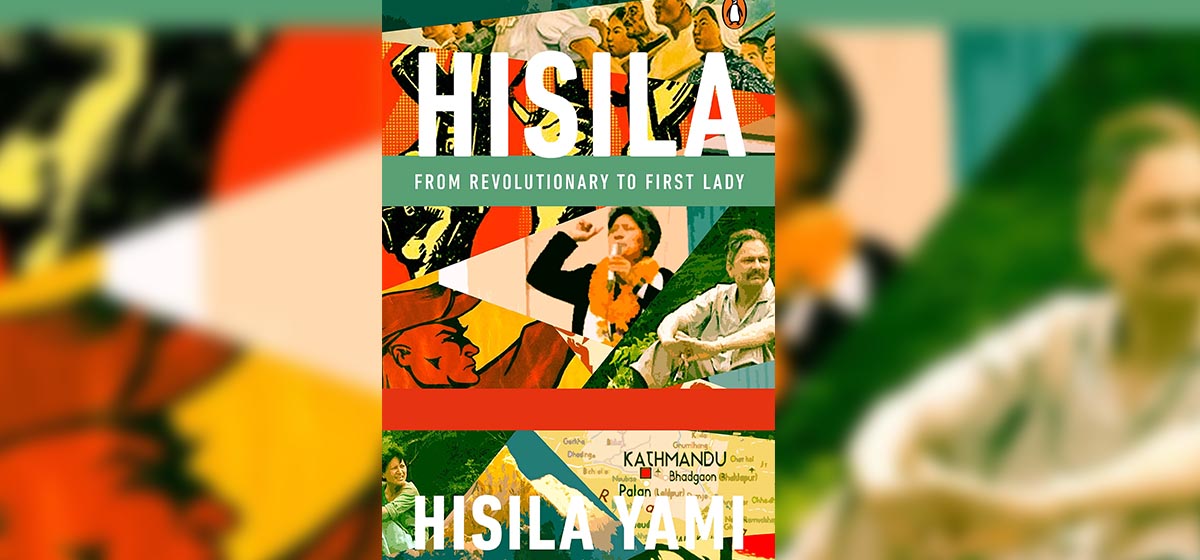
One may not agree to the writer’s points of view when it comes to her analysis and interpretation of events and ideas, but what is important for the reader is to carve his or her own narrative by reading the experience of a political insider.
This book Hisila: from Revolutionary to First Lady by HisilaYami (Penguin Random House: 2021) is a narrative of the self and the collective political transformation or rather crisscrossing of a country from feudalism, monarchy to democracy, the three most visible ontological conditions of Nepal. HisilaYami’s story is a travel narrative in the geo-political terrain of the three simultaneous existences and the making of a revolutionary from the margin to a figure in the dominant central politics. From a student fighting in the streets of Kathmandu to her days of struggle in India and in the hills of Nepal, the book weaves long decades into a personal and political memoir.
My first impression after reading the book was to send an email to Mrs. HisilaYami. I wrote, “It is a wonderful political trace of memory, an exemplary struggle of a woman who knows how to fight and how to internalize affirmative action.” What is influential about the book is how political action becomes a matter of disruption of the totalitarian regime and participation in democratic public domain. One may like her political ideas or dislike the communist ideology, but the process of reading such books is about comprehending a significant slice of history which shaped a country from one form of socio-political structure to another, from absolutism to pluralism.
There are three parts in the book, which are distributed into thirty-eight chapters and an epilogue. There are many instances where the personality of a woman comes to the fore with multiple identities as a student, a teacher, a mother, and a wife which finally constructs an identity of a revolutionary. In “Victim of Underdevelopment: motherhood and activism,” she writes: “Slowly the people’s movement was gearing up to end monarchy. For me, this was the beginning of a great exposure, both personally and politically. I was undergoing the experience of motherhood in an underdeveloped feudal country, which was on the verge of a momentous political upheaval amidst sharp ideological debates.” What is striking is how a compassionate woman’s sentiment, who had lost her first child and was rearing a baby girl, shaped her experience toward a struggle in the masculine world of politics.
The political world of the men and her analysis of the major Maoist leaders is worth reading. In the chapter “Relationship with Leaders: diverse personalities,” she analyzes both her husband and other prominent leaders of the party. She evaluates her husband Baburam Bhattarai’s character, “BRB was an idealist when it came to questions of organization and power. His lack of focus in organizational matters had not only left him powerless often, but brought suffering upon his followers. His critique of the party’s monolithic tendency was looked upon as support for Trotsky.” The chapter concentrates on what she thinks about the comrades she worked with.
The book is a memoir with layers of episodic movements from one event to another without giving any respite to the reader. The book could have been written in more than a volume. But the strongest part of the book is how historical memory is transformed into material memory or a piece of literature. The second part of the book focuses on the revolutionary journey which gives a wider picture of one of the most significant phases of modern Nepali history around leadership and war against the establishment. One may not agree to the writer’s points of view when it comes to her analysis and interpretation of events and ideas, but what is important for the reader is to carve his or her own narrative by reading the experience of a political insider.
The coda of the review expects the reader to unfold discourses and more debates on present Nepali history which has seen unrelenting feudalism, rigid caste system, hierarchies, and the rise of democracy. The book also tells how even extreme ideologies find discursive spaces to participate in a democratic system which is one of the exclusive moments compared to other Marxist struggles throughout the world. When such revolutions have been timeless and unending, this book presents how communist ideology transformed itself toward affirmative political action, a term I borrow from the French philosopher Jacques Ranciere to suggest how one confronts and negotiates and forms history, or in other words, how one encounters the power and at the same time accommodates to contribute to a new order. The book reveals this grounding of a political party which both fought and negotiated.
https://myrepublica.nagariknetwork.com/news/hisila-from-revolutionary-to-first-lady/#/trending
